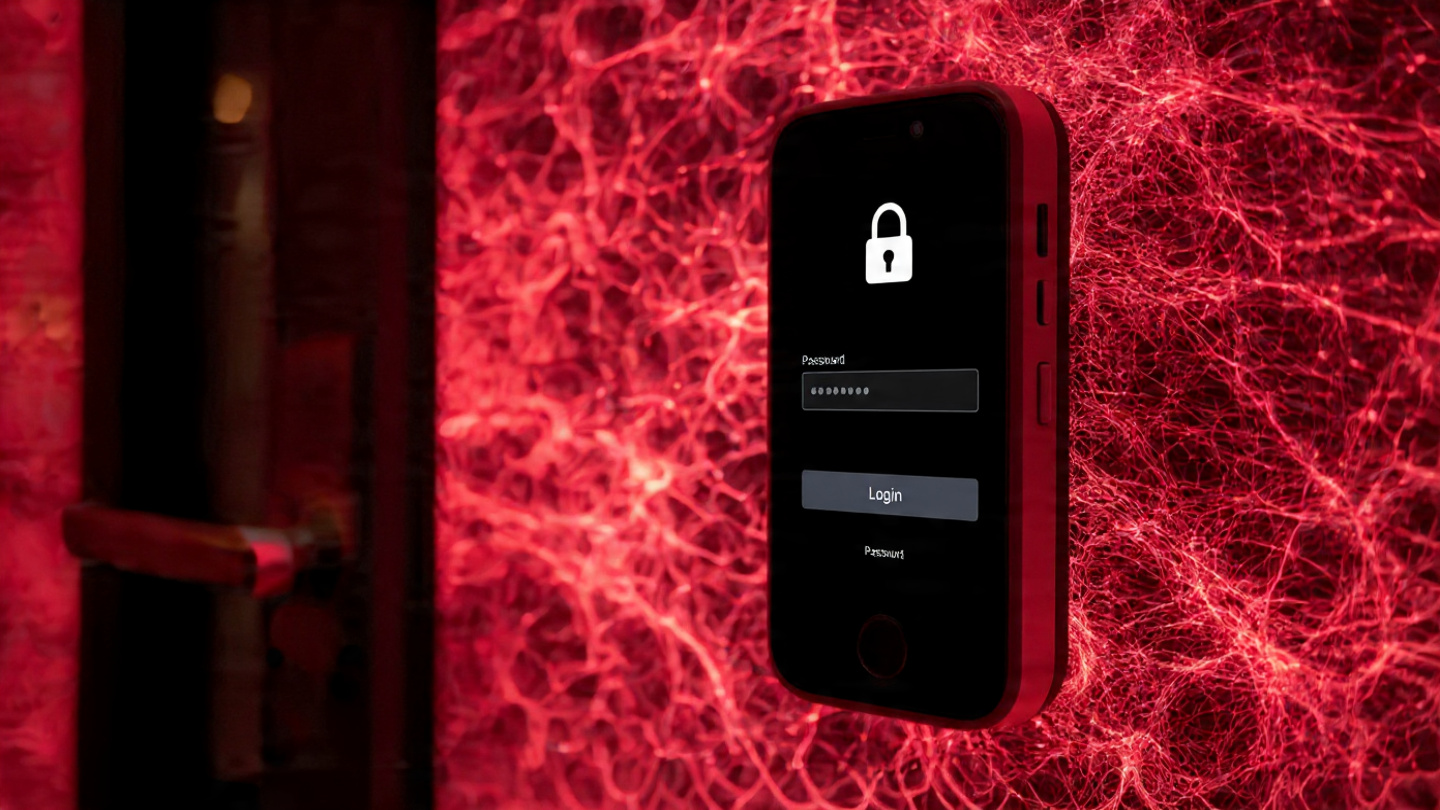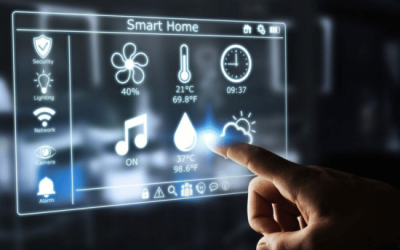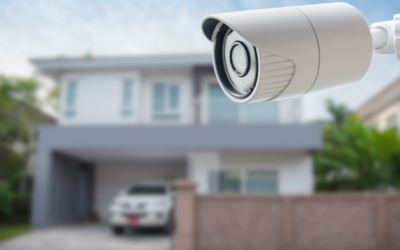The Evolution of Keys: From Metal to Mobile Access Control.
The history of metal keys dates back thousands of years, with the earliest known examples originating in ancient Egypt around 4000 years ago. These primitive keys were made from wood and were used to secure doors and storage spaces. As civilizations advanced, so did the design and functionality of keys.
The Romans, for instance, developed more sophisticated locking mechanisms, which included the use of metal keys that could be easily manipulated to unlock various types of locks. This evolution marked a significant turning point in security, as it provided a means for individuals to safeguard their possessions and private spaces. As time progressed, the design of keys became more intricate and specialized.
By the Middle Ages, locksmithing had emerged as a respected trade, with artisans creating elaborate locks and keys that not only served a functional purpose but also showcased artistry and craftsmanship. The introduction of warded locks and pin tumbler locks further enhanced security, making it increasingly difficult for unauthorized individuals to gain access. Metal keys became a symbol of trust and ownership, representing the ability to control access to personal and communal spaces. Peace of mind is our priority when it comes to your security needs.
The Rise of Keyless Entry Systems
The advent of keyless entry systems marked a significant shift in how individuals accessed their homes and businesses. Initially introduced in the automotive industry during the late 20th century, keyless entry systems allowed drivers to unlock their vehicles without the need for traditional metal keys. This innovation quickly gained popularity due to its convenience and ease of use.
As technology advanced, keyless entry systems began to find their way into residential and commercial properties, offering a new level of security and accessibility. Keyless entry systems utilize various technologies, including keypads, proximity sensors, and smartphone applications, to grant access. These systems eliminate the need for physical keys, reducing the risk of lost or stolen keys.
Additionally, they often come equipped with features such as temporary access codes for guests or service personnel, enhancing security while maintaining convenience. The rise of keyless entry systems has transformed the way people think about security, paving the way for more advanced access control solutions.
The Invention of Electronic Access Control
The invention of electronic access control systems revolutionized security management across various sectors. These systems integrate electronic components with traditional locking mechanisms, allowing for more sophisticated control over who can access specific areas. Electronic access control systems can be programmed to grant or deny access based on time schedules, user credentials, or specific events.
This level of customization provides organizations with greater flexibility in managing their security protocols. One of the most significant advancements in electronic access control is the use of RFID (Radio Frequency Identification) technology. RFID-enabled cards or fobs can be easily scanned at access points, allowing for quick entry without the need for physical keys.
This technology not only streamlines the entry process but also enables organizations to track access patterns and monitor who enters and exits their facilities. As electronic access control continues to evolve, it is becoming an essential component of modern security infrastructure.
The Advantages of Mobile Access Control
Mobile access control systems have emerged as a game-changer in the realm of security management. By leveraging smartphones and mobile devices, these systems offer unparalleled convenience and flexibility for users. One of the primary advantages of mobile access control is the ability to manage access remotely.
Users can grant or revoke access permissions from anywhere in the world, making it easier to accommodate guests or service personnel without being physically present. Additionally, mobile access control enhances user experience by eliminating the need for physical keys or cards. Users can simply use their smartphones to unlock doors or gain entry to secure areas.
This not only simplifies the process but also reduces the likelihood of lost or forgotten keys. Furthermore, mobile access control systems often come equipped with advanced features such as real-time notifications and activity logs, providing users with valuable insights into their security status.
The Impact of Mobile Access Control on Security
The impact of mobile access control on security cannot be overstated. By integrating mobile technology into access control systems, organizations can significantly enhance their security measures. One of the most notable benefits is the ability to implement multi-factor authentication, which adds an extra layer of protection by requiring users to verify their identity through multiple means before gaining access.
Moreover, mobile access control systems can be easily updated and managed through cloud-based platforms. This allows organizations to quickly respond to security threats or changes in personnel without the need for physical key replacements or reprogramming locks. The ability to monitor access in real-time also enables organizations to identify potential security breaches more effectively and take immediate action when necessary.
The Integration of Mobile Access Control with Smart Home Systems
As smart home technology continues to gain traction, the integration of mobile access control with smart home systems has become increasingly prevalent. Homeowners can now manage their security systems alongside other smart devices through a single mobile application. This seamless integration allows users to control everything from lighting and thermostats to door locks and security cameras from one centralized platform.
The benefits of this integration extend beyond convenience; it also enhances overall home security. For instance, homeowners can set up automated routines that lock doors at specific times or receive alerts when someone attempts to gain unauthorized access. Additionally, smart home systems can be programmed to work in conjunction with mobile access control, allowing users to create temporary access codes for guests or service providers that expire after a set period.
The Evolution of Key Fobs and Remote Entry
Key fobs have evolved significantly since their inception, transitioning from simple remote controls to sophisticated devices that enhance security and convenience. Initially used primarily in automotive applications, key fobs have expanded their reach into residential and commercial settings as part of electronic access control systems. Modern key fobs often incorporate advanced technologies such as RFID and Bluetooth, allowing users to unlock doors with a simple press of a button or even proximity detection.
The evolution of key fobs has also led to increased customization options for users. Many key fobs now come equipped with features such as panic buttons or integrated alarms that provide an added layer of security in emergency situations. Furthermore, as technology continues to advance, we can expect key fobs to become even more versatile, potentially incorporating biometric features or integration with mobile devices for enhanced functionality.
The Role of Biometric Access Control in Modern Security
Biometric access control has emerged as one of the most secure methods for managing entry into sensitive areas. By utilizing unique biological traits such as fingerprints, facial recognition, or iris scans, biometric systems provide a level of security that is difficult to replicate or forge. This technology has gained traction across various sectors, including government facilities, financial institutions, and high-security environments where traditional access methods may fall short.
The advantages of biometric access control are numerous. For one, it eliminates the need for physical keys or cards that can be lost or stolen. Additionally, biometric systems can be integrated with other security measures, such as video surveillance or alarm systems, creating a comprehensive security solution that enhances overall safety.
As biometric technology continues to advance, we can expect its adoption to grow even further in both residential and commercial applications.
The Future of Access Control Technology
The future of access control technology is poised for exciting developments as innovations continue to emerge at a rapid pace. One trend that is likely to shape the future is the increasing reliance on artificial intelligence (AI) and machine learning algorithms in security systems. These technologies can analyze vast amounts of data to identify patterns and anomalies in access behavior, enabling organizations to proactively address potential security threats before they escalate.
Additionally, as smart cities become more prevalent, we can expect access control technology to play a crucial role in urban planning and infrastructure development. Integrated systems that connect various aspects of city life—such as transportation, public safety, and energy management—will rely on advanced access control solutions to ensure seamless operation while maintaining security standards.
The Environmental Impact of Mobile Access Control
As society becomes more conscious of environmental sustainability, mobile access control systems offer several benefits that align with eco-friendly practices. By reducing reliance on physical keys and cards made from plastic or metal, organizations can minimize waste associated with traditional access methods. Furthermore, mobile access control systems often utilize cloud-based platforms that require less physical infrastructure compared to conventional locking mechanisms.
Additionally, mobile access control can contribute to energy efficiency in smart buildings by integrating with other smart technologies that optimize resource usage. For example, automated locking systems can work in tandem with energy management solutions to ensure that doors are locked when spaces are unoccupied, reducing energy consumption while enhancing security.
The Challenges and Limitations of Mobile Access Control Systems
Despite the numerous advantages offered by mobile access control systems, there are challenges and limitations that must be addressed for widespread adoption. One significant concern is cybersecurity; as these systems rely on internet connectivity and mobile devices, they are vulnerable to hacking attempts and data breaches if not adequately secured. Organizations must invest in robust cybersecurity measures to protect sensitive information associated with user credentials and access logs.
Another challenge is ensuring compatibility across various devices and platforms. With a multitude of smartphone models and operating systems available on the market, developers must create solutions that work seamlessly across different environments while maintaining user experience and functionality. Additionally, there may be resistance from individuals who are accustomed to traditional key-based systems and may be hesitant to adopt new technologies due to concerns about reliability or ease of use.
In conclusion, the evolution from metal keys to advanced mobile access control systems represents a significant transformation in how we approach security management. As technology continues to advance and integrate into our daily lives, we can expect further innovations that enhance convenience while prioritizing safety and sustainability.
In exploring the advancements in access control technology, it’s interesting to consider how these innovations intersect with broader security measures. For instance, the article on alarm systems highlights the importance of integrating various security solutions to enhance overall safety. As we transition from traditional metal keys to mobile access control, understanding the role of comprehensive security systems becomes increasingly vital in protecting our homes and businesses.
FAQs
What is the history of traditional metal keys?
Traditional metal keys have been used for thousands of years, originating in ancient civilizations such as Egypt and Rome. They were typically made of bronze or iron and operated mechanical locks by aligning internal components to unlock doors.
How have keys evolved over time?
Keys have evolved from simple metal designs to more complex mechanical keys, then to electronic key cards, and now to mobile access control systems that use smartphones and wireless technology for secure entry.
What is mobile access control?
Mobile access control refers to the use of mobile devices, such as smartphones or smartwatches, to unlock doors or access secured areas. This technology often uses Bluetooth, NFC, or Wi-Fi to communicate with access control systems.
What are the advantages of mobile access control over traditional keys?
Mobile access control offers enhanced security, convenience, and flexibility. Users can unlock doors without physical keys, remotely manage access permissions, and reduce the risk of lost or duplicated keys.
Are mobile access control systems secure?
Yes, modern mobile access control systems use encryption, multi-factor authentication, and secure communication protocols to protect against unauthorized access and hacking.
Can mobile access control replace all traditional keys?
While mobile access control is increasingly popular, traditional keys are still widely used in many applications. The transition depends on infrastructure, cost, and user preference.
What industries benefit most from mobile access control?
Industries such as hospitality, corporate offices, healthcare, education, and residential buildings benefit from mobile access control due to improved security and streamlined access management.
How do mobile access control systems work?
These systems typically involve a mobile app that communicates with a door lock via Bluetooth, NFC, or Wi-Fi. The app verifies user credentials and sends an unlock command to the lock.
Is it possible to integrate mobile access control with existing security systems?
Yes, many mobile access control solutions can be integrated with existing security infrastructure, including alarm systems, video surveillance, and building management systems.
What are the environmental impacts of moving from metal keys to mobile access control?
Mobile access control reduces the need for physical key production and duplication, lowering material waste. However, it requires electronic devices and infrastructure, which have their own environmental considerations.












